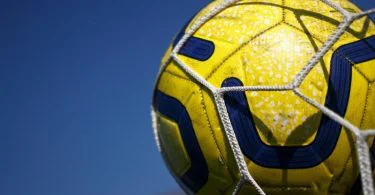The main job of a defender is to stop the other team from scoring. They do this by blocking shots, making tackles, intercepting passes, and winning headers. They work hard to keep the defensive shape and organisation of the team. On the other hand, a striker’s main job is to score goals and set up goals for teammates. They find openings in the other team’s defence and take advantage of them with their pinpoint shooting, strategic positioning, and speed off the ball. Defenders focus on protecting their goal, while strikers put pressure on the other team and try to score when they get the chance. This shows how different the objectives of these two important football positions are.
Who is a Defender?
A defender is an essential football team member whose primary duty is to protect the team’s goal and prevent the opponent from scoring. Defenders are responsible for maintaining the team’s defensive structure, marking opponents, winning tackles, intercepting passes, and clearing the ball from dangerous areas.
Several roles can be assigned to defenders:
Centre-backs
They specialise in aerial duels, tackling, and marking opposing forwards when positioned centrally. Their physical presence and reading of the game are crucial.
Full-back
They contribute defensively by marking wingers and offensively by making overlapping runs and crossing the ball into the box while stationed in the wide regions of the defence.
Wing-back
In specific formations, they function as a hybrid of full-backs and wingers, covering more ground and adding breadth to offence and defence.
Sweeper
A less frequent position, the sweeper serves as the final line of defence, clearing balls that have passed the centre-backs and launching counterattacks.
Defenders must have excellent communication abilities, tactical knowledge, and poise under pressure. Their efforts are crucial to a team’s stability and success, as a robust defence is the cornerstone of excellent overall performance on the field.
Who is a Striker?
A striker is a crucial football team member, with the primary objective of scoring goals and providing opportunities for teammates. Strikers frequently exhibit outstanding shooting accuracy, positioning, and off-the-ball mobility, allowing them to exploit defensive weaknesses and convert scoring opportunities.
There are numerous sorts of strikers, each with distinctive characteristics:
Poacher
Inside the penalty area, a goal-scoring specialist relies on quick reactions, positioning, and precision finishing.
Target Man
A physically robust attacker who thrives in aerial duels and brings teammates into play by holding the ball.
Deep-Lying Forward
Slides deeper into midfield, creating space for other attackers and connecting play between midfield and attack.
False Nine
The player occupies the central forward position but drifts into midfield, pulling defenders out of position and breaking the opponent’s defensive shape.
Pacy Forward
Utilises their speed to exploit holes behind the opponent’s defence, providing possibilities to score.
A skilled striker can significantly impact a team’s offensive power, frequently proving decisive in close games. Their ability to capitalise on opportunities and score decisive goals is crucial to a team’s overall performance on the pitch.
Difference Between Defender and Striker
Strikers attempt to score goals and create chances for teammates, while defenders focus on preserving their goal by maintaining defensive structure, marking opponents, and intercepting passes. Strikers excel at shooting accuracy, positioning, and off-the-ball movement, while defenders focus on defensive abilities like tackling and aerial duels. The main difference rests in the roles’ respective aims: defenders are tasked with protecting the net and keeping the team stable, while forwards are tasked with exerting offensive pressure and capitalising on scoring opportunities. Here are some of the significant differences between defenders and forwards:
Primary Role
The primary objective of defenders is to prevent goals from being scored, while the primary purpose of strikers is to score goals and set up teammates for goals.
Position on Field
While strikers lead the offensive charge, defenders are stationed in the back third of the pitch.
Responsibilities
Defenders are in charge of marking their opponents, winning tackles, and intercepting passes, while strikers focus on finding holes in the defence and scoring when they get the chance.
Tackling
Strikers prioritise avoiding defenders and creating space, while defenders excel in tackling and winning possession.
Aerial Duels
Defenders focus on winning headers to clear danger, while strikers use them to score or assist goals.
Communication
While strikers need communication to plan attacks and discover openings, defenders rely on it to maintain defensive organisation.
Tactical Awareness
To keep their defensive structure and anticipate their opponent’s moves, defenders require tactical awareness, while strikers rely on it to time their runs and take advantage of open spaces.
Physicality
While going up against rival forwards, defenders typically have more raw strength, while strikers put more emphasis on speed, agility, and finishing.
Passing
Strikers are responsible for creating scoring opportunities, while defenders are responsible for keeping the ball in play with accurate short passes.
Off-the-ball Movement
Strikers employ shrewd movement to locate space and create openings, while defenders focus on marking opponents and keeping defensive lines stable.
Set Pieces
The primary contribution of defenders in set-piece scenarios is defensive, while the primary goal of strikers is to score on set-piece opportunities such as free kicks, penalties, and corners.
Team Influence
A team’s defenders are the rock upon which the defence rests, while the assault is led by the strikers, who are the game-changers in many close contests.







